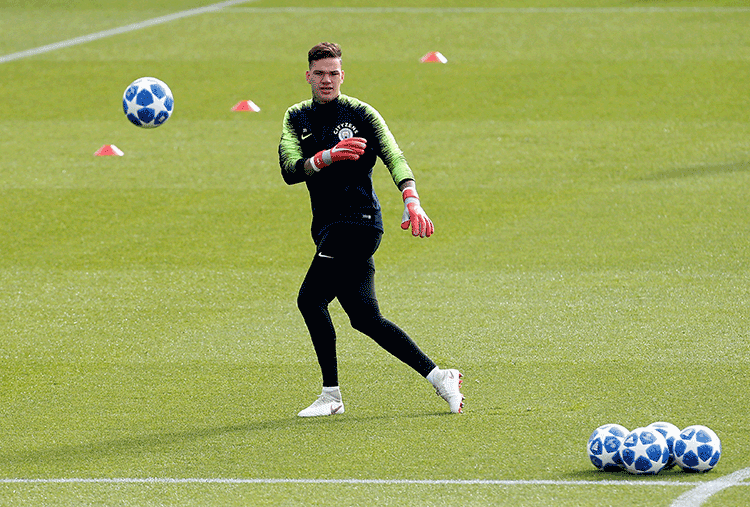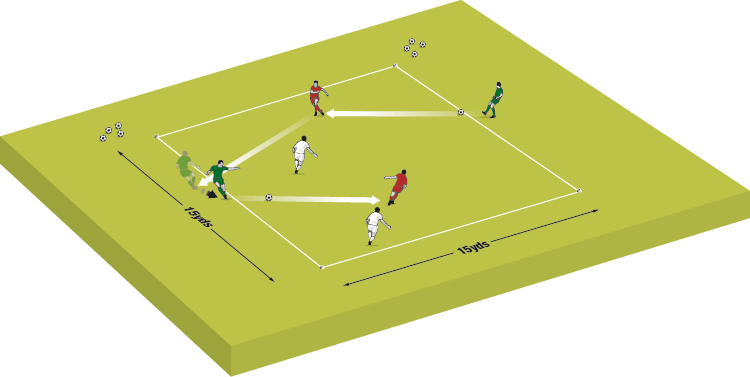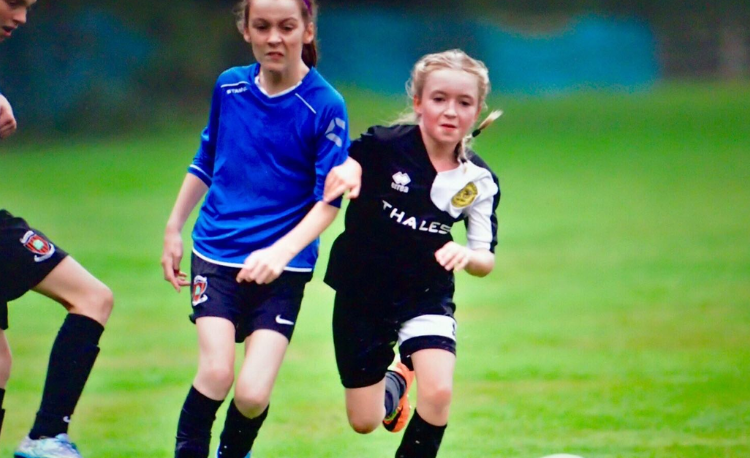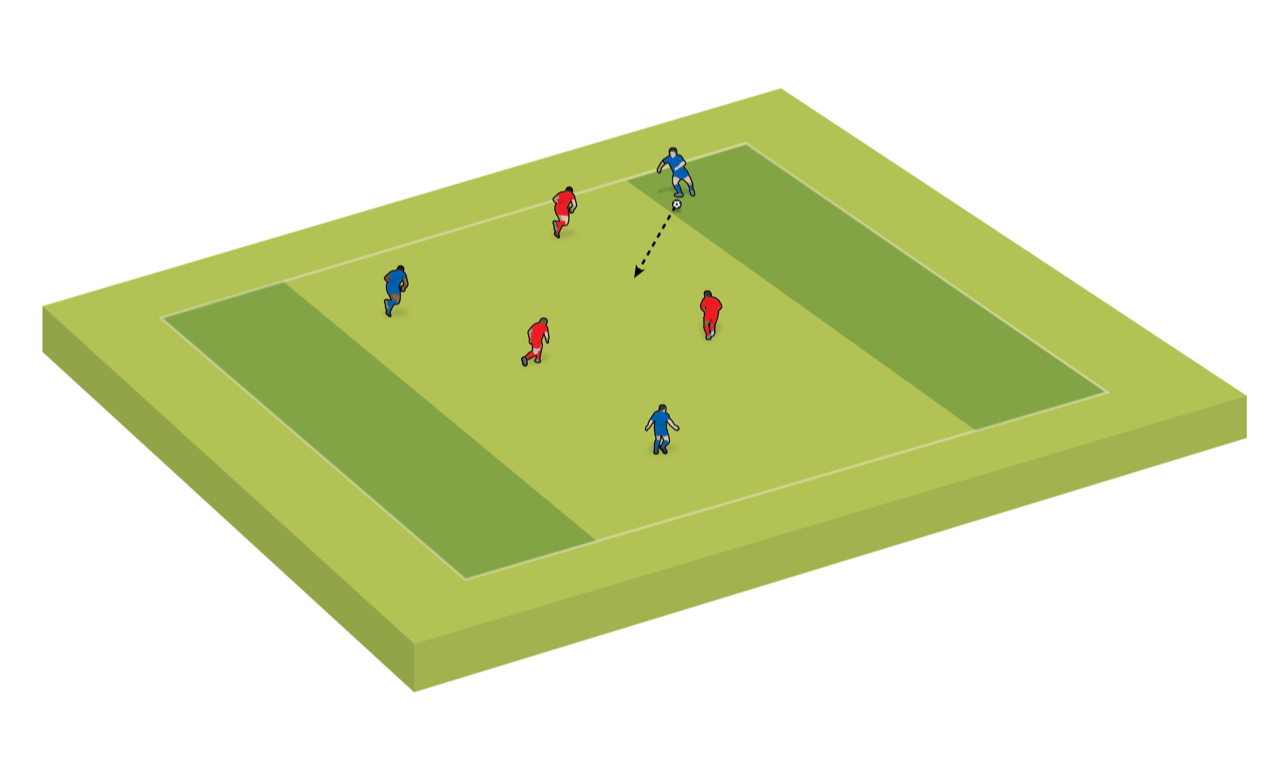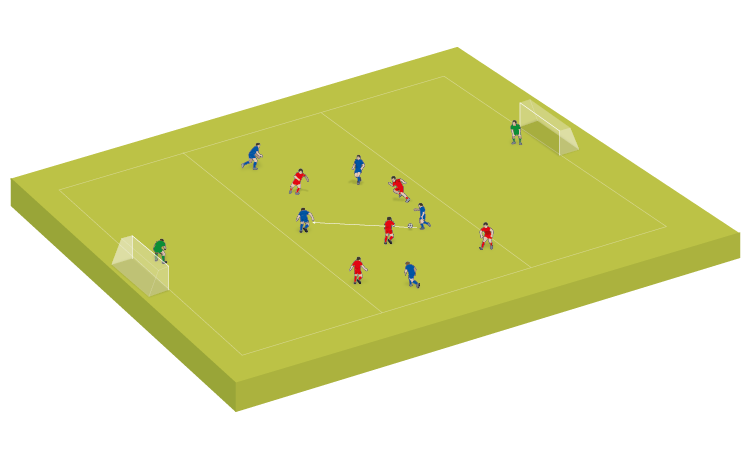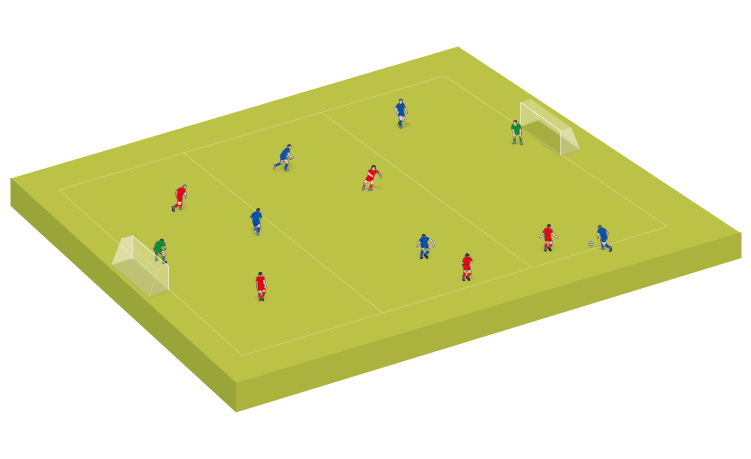Score more goals in 5 weeks: WEEK 1 Keepers start attacks
Over the next five weeks this series will show you how to move play through the thirds to get the ball into positions where your strikers can attack the ball and score goals.
If you want your team to score goals, the best place to start is by keeping hold of the ball. Possession is a vital part of any successful team – the more your team has the ball, the more likely they are to win the game. So why then do grassroots teams whack the ball upfield to try to get it to the strikers in one pass?
Success is much more likely if teams keep possession of the ball and build from the back with crisp, accurate passing. Of course this takes practice and often coaches will find it a daunting task to get teams passing the ball in their half of the pitch. In a youth team it takes confidence and bravery from the players involved – anxiety damages creativity and confidence comes from the coach, so your role in this process is key.
It may be that the team will have to change the way it plays and a goal or two might be lost along the way by playing short, especially if the ball gets intercepted, but it will be creating far more at the other end by not giving the ball straight back to the opposition with a big punt upfield.
Keep the ball
Think Barcelona, Bayern Munich or Arsenal. These are the teams on top of their leagues and they all play a fast passing game where possession of the ball is vital to the success of the team. Using this week’s sessions coaches will be able to teach players the art of keeping hold of the ball in defence and setting up play, so there is space to find the next stage of the tactic – playing through the midfield.
When former Manchester United central defender Rio Ferdinand was learning his trade as a young player in the West Ham United academy, he was coached in receiving passes, moving to get the return pass and playing balls through to the midfield in the opposition half of the pitch. He kept hold of the ball and those early coaching sessions paid dividends for the player, for Manchester United and for England.
A key way to keep possession at the back is by getting the goalkeeper to play short. Barcelona’s Marc-André ter Stegen is the master of getting the ball and playing out to his defenders – a goalkeeper in this situation must be comfortable using both his hands and his feet.
Patience is a key aspect to playing out from the back. If defenders and the goalkeeper can link up to keep the ball and spread out across the back the opposition will be more spread out and will find it difficult to press the players with the ball unless they stretch themselves up the pitch creating spaces that will give the team chance to move the ball to the next phase.
TOP TIPS FOR PLAYING OUT OF DEFENCE
If you want your team to score more goals, attack are best started by playing the ball out of defence…
> Defenders must be wary and keep their shape until the goalkeeper has the ball in his hands
> The defenders should move into space so the goalkeeper has options to play the ball
> The centre backs move wide and the fullbacks push up towards the halfway line, creating space for players to move and pass into
> Goalkeepers must look for players who ‘want the ball’. They will be side on open to the pitch, so when they receive the ball they can see their own goal and their opponent’s goal
Newsletter Sign Up
Coaches Testimonials

Gerald Kearney, Downtown Las Vegas Soccer Club

Paul Butler, Florida, USA

Rick Shields, Springboro, USA

Tony Green, Pierrefonds Titans, Quebec, Canada
Subscribe Today
Discover the simple way to become a more effective, more successful soccer coach
In a recent survey 89% of subscribers said Soccer Coach Weekly makes them more confident, 91% said Soccer Coach Weekly makes them a more effective coach and 93% said Soccer Coach Weekly makes them more inspired.
*includes 3 coaching manuals
Get Weekly Inspiration
All the latest techniques and approaches
Soccer Coach Weekly offers proven and easy to use soccer drills, coaching sessions, practice plans, small-sided games, warm-ups, training tips and advice.
We've been at the cutting edge of soccer coaching since we launched in 2007, creating resources for the grassroots youth coach, following best practice from around the world and insights from the professional game.
